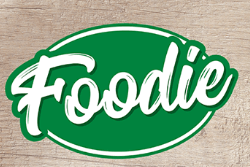Make the dough:
In a big bowl, mix together the warm milk, yeast, and sugar. Stir softly and wait for 5-10 minutes until the mixture gets bubbly. This shows that the yeast is working.
Slowly mix the flour, salt, and oil into the yeast mixture. Mix until the dough becomes sticky.
Place the dough on a surface with flour and knead for around 10 minutes. Add more flour if needed until the dough is smooth and stretchy.
Allow the dough to grow:
Put the dough back in the bowl, cover it with a towel or plastic wrap, and let it grow in a warm spot for 1-2 hours until it doubles in size.
Form the dough.
After the dough has grown in size, press it gently to remove any air bubbles. Separate the dough into the same-sized pieces, according to the size of the bread you wish to bake.
Form each part into a circular or oval-shaped bread.
Cook the dough by boiling it.
Heat 2.5 to 3 liters of water in a big pot until it boils vigorously. Put a small amount of salt into the water that is boiling.
Gently put the formed dough pieces into the boiling water, a few at once, to avoid filling the pot too much.
Cook each piece for 1-2 minutes on both sides until they puff up a bit and become firm.
Bake the bread until it is ready.
Take out the cooked dough from the water with a slotted spoon and place it on a baking sheet covered with parchment paper or a greased surface.
Allow the cooked dough to cool a bit before cutting or serving.
Serve and enjoy:
This bread tastes great when eaten warm, right after it's been baked. You can eat it with butter, jam, or use it for sandwiches. The special texture and taste of this will become a favorite in your home.
Tips for Cooking:
Maintain the Dough's Softness: To achieve a nice texture, it is important to keep the dough a bit sticky before starting to knead it. Avoid using too much flour, or the bread could end up heavy.
Different flavors can be achieved by adding herbs, cheese, or garlic to the dough. You can also spread melted butter on the tops and add sesame seeds or poppy seeds before boiling.
Storage tip: Keep any extra bread in a sealed container at room temperature for a maximum of 3 days. This bread can also be frozen easily; just wrap it well in plastic wrap and put it in a freezer bag. Let it warm up to room temperature before serving.
Nutritional information (for each portion, calculated for 10 portions):
Calories: Around 250
Protein: 5 grams
Fat content: 10 grams
Carbs: 35 grams
Fiber content: 2 grams
Sugar: 1 gram
Questions that could be asked:
Can I use whole wheat flour instead of regular flour?
Yes, you can use whole wheat flour instead, but the bread might end up heavier. You could mix it with regular flour to make it lighter.
Can I cook the bread by baking it instead of boiling it?
The process of boiling is very important to achieve the special texture of this bread. Baking by yourself will produce a result that is more similar to a classic loaf.
What can I have with this bread?
This bread is very flexible and can be enjoyed with soups, salads, or as a base for sandwiches. It also tastes great with a little bit of butter or a touch of honey.
How can I tell when the dough is ready to be cooked in hot water?
The dough should have doubled in size and feel light and fluffy when touched. If it doesn't spring back when you press it, then it's done.
Final thoughts:
This recipe for bread that doesn't need an oven is a great option for those who want to make homemade bread fast and with little effort. Cooking the bread by boiling it creates a special chewy texture that is very satisfying and tasty. Great for eating in the morning, afternoon, or evening, this bread will surely become a favorite in your home. Try it once, and you won't want to buy bread from the store again!

